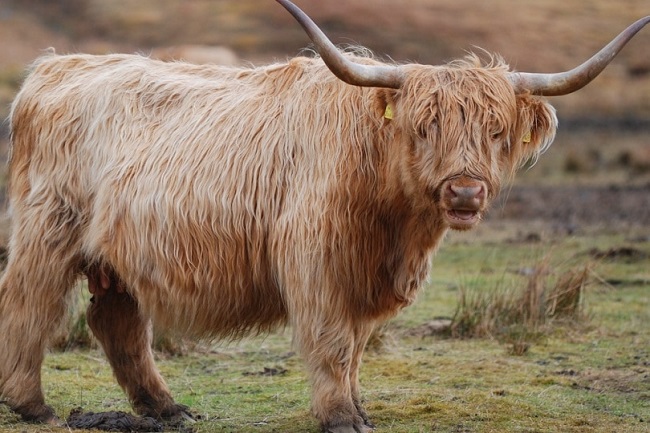The bovine world is filled with an astounding diversity of breeds, each with unique characteristics that make them stand out.
Among these, long-haired cows hold a special place due to their distinctive appearance and their adaptations to harsh climates.
In this comprehensive guide, we will walk you through the different breeds of cows with long hair, discussing their origins, traits, and notable characteristics.

Some Breeds of Cow With Long Hairs
Here you will find out some of the cow breeds with long hair:
Read Also:
Highland Cattle
Perhaps the most iconic breed among the long-haired cows is the Highland cattle from Scotland. Recognized for their long, wavy hair and impressive horns, these hardy animals are well-adapted to rugged landscapes and harsh weather.
The coat, which comes in a range of colors from black to red, yellow, and white, provides excellent insulation against cold weather.
Galloway Cattle
Originating from Scotland, Galloway cattle are another breed known for their thick, long hair. They have a double coat, with the outer layer being long, coarse, and weather-resistant, and the inner layer short, soft, and insulating. These cattle are usually black, but they can also be found in dun, red, or belted varieties.
Yak
Yaks are native to the Himalayas and are famous for their long, shaggy hair. Though technically not a breed of cow, they are a close relative and are often used for similar purposes such as milk and meat production.
Yaks have been domesticated for thousands of years and are an integral part of the local communities in their native regions.
Musk Ox
Like Yaks, Musk Oxen are not technically cows but belong to the Bovidae family. Native to the Arctic, they have a thick coat of long hair, called qiviut, which is considered one of the warmest wools in the world. Musk Oxen are primarily kept for this incredibly insulating wool.
White Park Cattle
The ancient White Park Cattle, native to Britain, have a long, white coat that contrasts with their black points. These hardy animals are well-suited to rough grazing land and are often used for conservation grazing due to their ability to thrive on poor-quality pasture.
The Origins and Adaptations of Long-Haired Cows
Long-haired cows are often associated with colder climates, and rightfully so. The long hair acts as a protective layer against harsh weather conditions.
Breeds such as the Highland and Galloway from Scotland, the Yak from the Himalayas, and the Musk Ox from the Arctic are perfect examples of this. These breeds have evolved over centuries, developing thick, long hair as a form of insulation.
The Value of Long-Haired Cows
Apart from their adaptability to harsh weather, long-haired cows hold significant economic value. Their wool, particularly that of the Musk Ox, is considered a luxury material.
Additionally, these cows are often bred for their meat, which is known for its distinct flavor and lean quality. In particular, Highland cattle meat is highly valued for its lower cholesterol levels.
The Role of Long-Haired Cows in Conservation Efforts
Long-haired cows like the White Park cattle play a crucial role in conservation efforts. Their ability to thrive on poor-quality pasture makes them ideal for conservation grazing. This is a practice where livestock is used to manage land biodiversity.
The Health and Care of Long-Haired Cows
Caring for long-haired cows involves unique challenges. These cows require regular grooming to maintain their coats and avoid matting or parasitic infestations. Proper nutrition is also vital to maintain their overall health and the quality of their coat.
The Global Spread of Long-Haired Cow Breeds
Long-haired cow breeds have made their way across the globe due to their adaptability and value. While originally found in colder regions, these cows can now be found on farms worldwide.
Read Also:
Conclusion
Long-haired cows, whether they’re sturdy Highland cattle, resilient Galloway, majestic Yaks, or ancient White Park cattle, all have their unique charm and utility.
These breeds have adapted beautifully to some of the world’s harshest environments, and their long, thick coats are not just an aesthetic marvel but also a testament to their resilience.
Whether you’re a farmer, a breeder, or someone fascinated by livestock, understanding these breeds provides a fascinating insight into the diverse world of bovines.
























